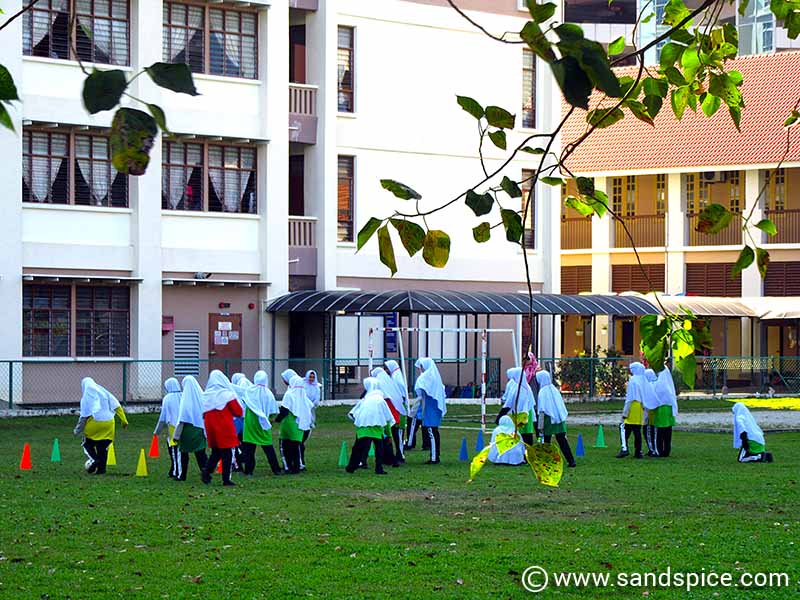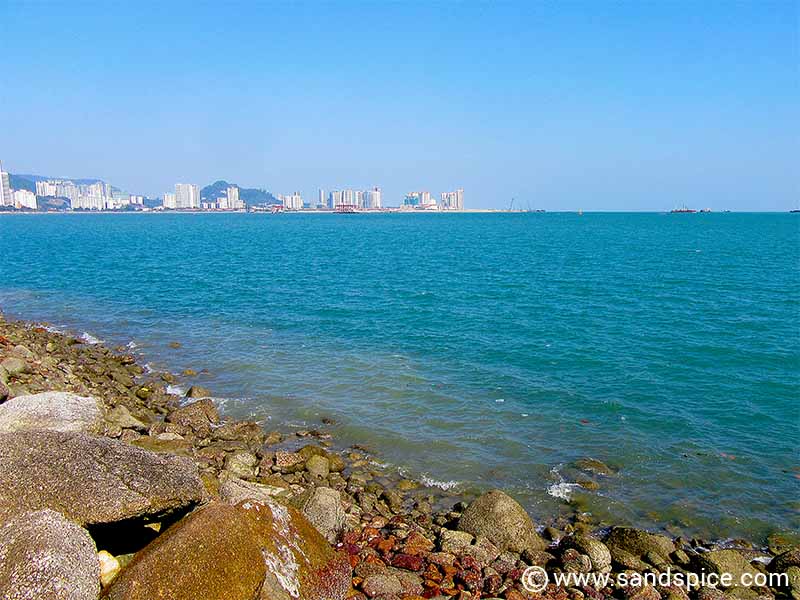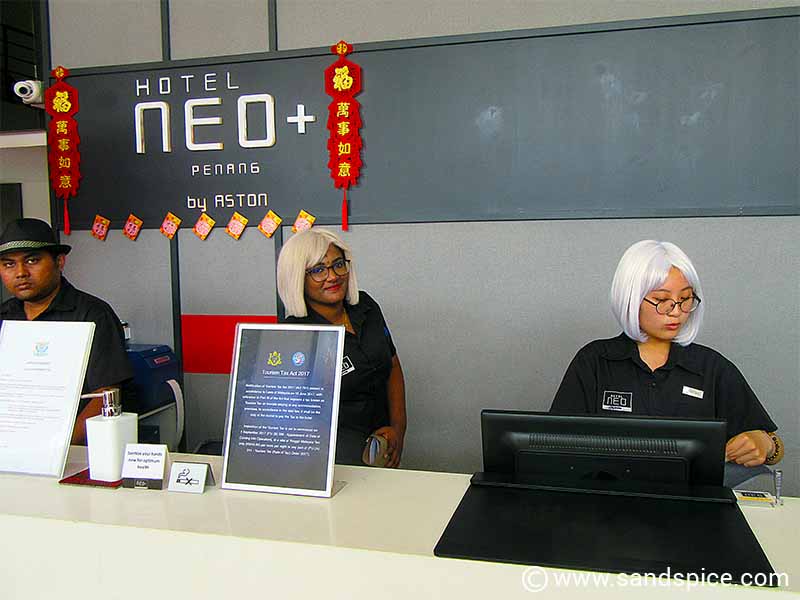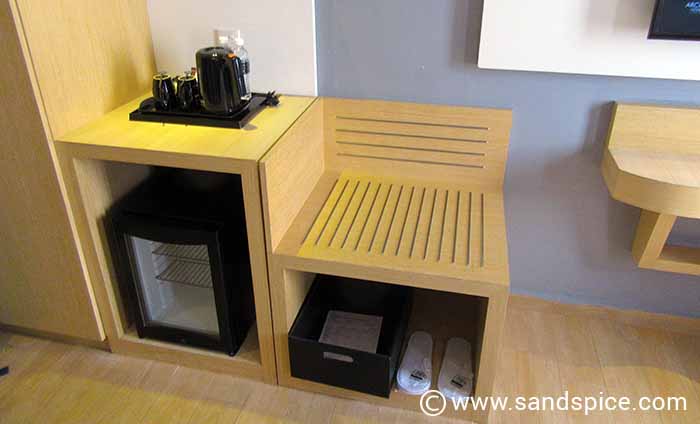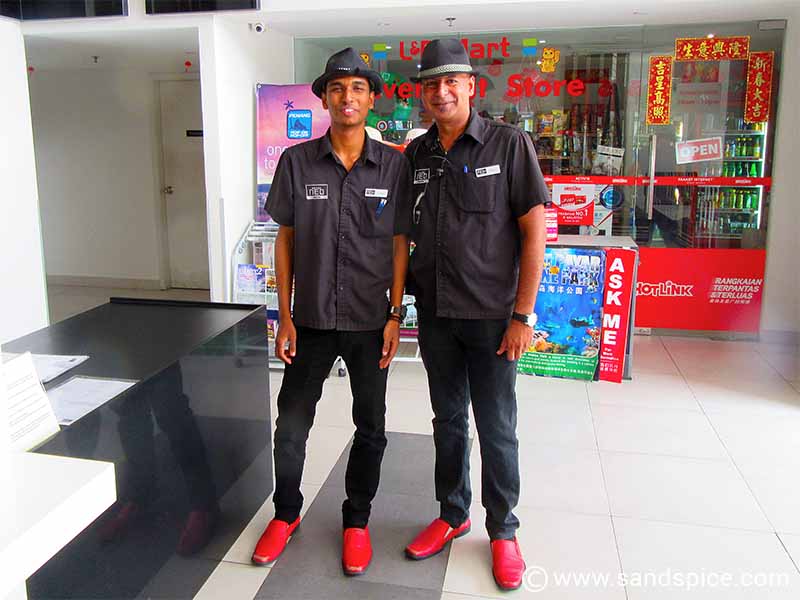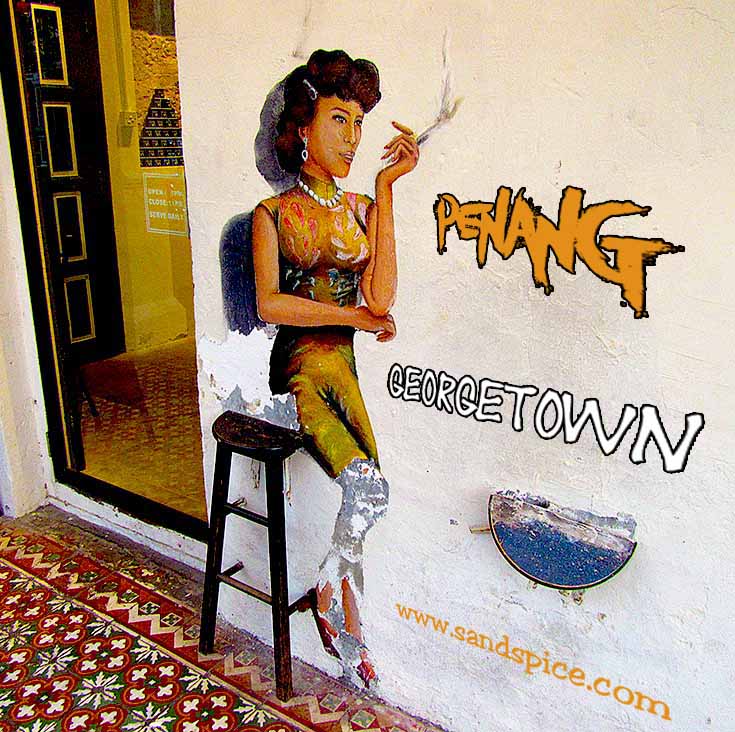
Georgetown Penang 🧨 A Cultural Smorgasbord
When you first set foot in Georgetown, it doesn’t immediately scream “UNESCO World Heritage Site.” It murmurs it, perhaps, from beneath a heavy layer of tropical humidity and the faint, persistent smell of frying things.
Yet, this captivating speck of humanity in Penang is exactly that: a certified cultural oddity where the old, the even older, and the slightly decrepit have merged to form a true smorgasbord of experiences.
We weren’t looking for a sanitised museum; we were seeking an authentic cultural dunking, and Georgetown certainly delivered, often by nearly tripping us into a roadside ditch. From temples that look like they’ve been dressed up for a street party to street art that’s seen better days, and a culinary scene that runs the full gamut, this city promises a proper feast for the senses.
Just don’t forget your sturdy shoes …and keep an eye out for the motorbikes.
Highlights
- 🗺️ Getting to Penang
- Pedestrian Perils ⚠️
- Festive Takeover 🐉 Chinese NY
- 🍜 Eating Out in Georgetown
- Buying Gold in Little India ✨
- Langkawi Long-Term Stay ☀️
- Hotel Deals in Georgetown
- Our ‘Open Jaw’ Schedule
The Long & Winding Road 🗺️ Getting to Penang
Following our somewhat soggy adventures island-hopping through Phuket and Langkawi—where duty-free booze was king and the beaches mostly delivered on their postcard promises—we pointed ourselves towards the southernmost anchor in our island itinerary: Georgetown, Penang.
Seven nights was the commitment. Seven nights to see if the hype was justifiable.
Now, for the geographically-challenged, Penang is technically an island. Crucially, however, it’s not so much of an island that they couldn’t build an immensely lengthy and surprisingly narrow 13.5-kilometre bridge connecting it to the Malaysian mainland. A week later, we would be trundling across this concrete umbilical cord on our way to Melaka.
For the immediate future, however, we arrived with a maritime flourish, having taken the (now no longer available) ferry boat from Langkawi.
Pedestrian Perils ⚠️ The Urban Obstacle Course
We’d booked ourselves into the Neo+ Hotel, slap-bang in the capital—Georgetown.
Now, the first challenge was the 20-minute walk to the hotel. It quickly became apparent that Georgetown’s civic planners have a distinct disdain for anyone not encased in two tonnes of metal.
Georgetown, and this is putting it mildly, is pedestrian-unfriendly. It’s not just a minor inconvenience; it’s an urban obstacle course designed by a committee of sadists.
- You risk an abrupt, high-speed meeting with the front end of a car or the low-slung handlebars of a scooter. Drivers view a red light as a suggestion, rather than a legally binding contract.
- You’ll be navigating a patchwork of broken, uneven pavements that pose a significant ankle-breaking threat.
- The ubiquitous open septic ditches gape menacingly at the unwary, ready to accept the ill-judged step.
If you value your limbs, you’ll find yourself standing at pedestrian crossings for what feels like an eternity, waiting for that glorious, elusive green light. And when it does arrive, don’t, for a split second, assume any driver will actually yield.
That sort of politeness is clearly considered a weakness in the Penang driving mindset.
We spent most of our early excursions dodging and weaving like panicked crabs.
A Safer Bet 🚌 Commuting with Caution
The alternative to death-by-pavement is, of course, motorised transport. Taking a local bus or simply hailing a ‘Grab‘ (the local ride-hailing service) is undeniably the safer option.
You’ll still spend a fair amount of your holiday stationary, observing the heavy traffic inch its way forward like a geriatric slug, but at least you won’t be risking an immediate, messy demise.
If you’re a sensible sort, you’ll inevitably be heading up the north coast eventually. That’s where you find the more picturesque sandy beaches—the sort that warrant a second look—alongside the truly eye-wateringly expensive condominiums and the startlingly tall, glass-and-steel tower blocks.
The Festive Takeover 🐉 Chinese New Year & the Soundtrack of Doom
Penang, whilst multi-cultural, leans heavily into its Chinese heritage. You notice this immediately, together with the sheer volume of construction visible everywhere and the inflated apartment prices which clearly aren’t aimed at the local working folk.
This is why Chinese New Year isn’t just an event here; it’s the event.
We were told, with a certain local pride, that Penang boasts the largest Chinese New Year bash in Southeast Asia. It’s a fortnight-long cycle of celebrations—the Chinese equivalent of our own protracted Christmas season.
The evidence of this festive spirit? A canned musak playing gaily and incessantly in every retail establishment.
It’s an innocuously cheerful, repetitive soundscape that drills its way into your brain with the persistence of a tiny, squeaky water torture… but it’ll take longer than 2 weeks to get those squeaky little tunes out of your head 🙁
Supermarket Sweep 🛒 Deal-maker or breaker?
Given the large expatriate population, you’d assume a few shops and supermarkets would cater to a discerning, or perhaps just homesick, Western palate.
Well, there is a Tesco’s … but don’t get too excited.
This is like no Tesco’s we’ve visited in Europe. Many of the brands were unrecognizable to us. Other than a few very basic international Tesco offerings there was little of interest, and we left with an empty shopping cart.
Our eventual saviour was the centrally-located Prangin Mall. This quickly became one of our preferred, air-conditioned venues for a quick retail dash. Crucially, the supermarket within has a decent-sized non-Halal section, which is a significant bonus.
It’s just a tragedy that the whole island isn’t duty-free, as Langkawi is. We could have done some real damage then.

The Prangin Mall – in central Georgetown
The Flavour Follies 🍜 Eating Out in Georgetown
Everyone, and I mean everyone, raves about the food in Penang. It’s the cornerstone of the entire experience, apparently. Yet, here is where we encountered some of our most dubious eating experiences in the whole of Malaysia.
It wasn’t that the food was necessarily ‘bad’ in a health-code-violation sort of way. It was just, more often than not, highly forgettable, or perhaps memorable for entirely the wrong reasons. The local soups, for example, were fine, but they were nowhere near the soaring culinary heights of the equivalent soups we’d enjoyed in Hong Kong.
We found it best to stick with the local food, of which there is a huge diversity ranging from Malay to Indian, Thai, Japanese and Chinese. The sheer volume is staggering.
A recurring theme, and this is where the local palate diverges from the Western, is the artificial sweetness. Many foods are sweetened, seemingly to please a particular local taste. The ubiquitous laksa is a case in point—a spicy, coconutty soup that somehow manages to taste like it had an extra spoonful of refined sugar chucked in at the end.
The street food, which is where it’s all happening, is predominantly deep-fried and, yes, often sweetened. Even the attractive, multi-colored ice-drinks, which look like a vibrant tropical dream, are sickly sweet.
We learnt quickly: better to stick to water. It’s boring, but it won’t give you instant diabetes.
You really must try the Chendul!
Chendul? 🍨 … anyone?
We had been emphatically recommended to try one of Penang’s absolute favourite treats: Chendul (or ‘Cendol’).
Specifically, from a particular, highly vaunted stall in the centre of Georgetown, surrounded by a throng of patiently waiting locals.
How bad could it possibly be?
For the uninitiated, Chendul is an iced, sweet dessert. It’s a mixture of creamy coconut milk and thick, unctuous palm sugar syrup. So far, (so good?). Then, things get interesting. They toss in red beans—yes, beans—and, most spectacularly, droplets of bright green rice flour jelly. The colour is startling. There were also, on closer inspection, several other entirely unidentifiable elements floating around in the sweet, cold mix.
As a foreigner, this dish plays merry hell with your expectations. It’s a textural and flavour assault that absolutely requires a sweet tooth. The combination of cold, sweet, creamy, and the soft, mushy red beans is genuinely unsettling.
We finished it, of course—waste not, want not—but it definitely falls into the category of “acquired taste.” You’ll either love it or spend the next hour trying to erase the memory.
What the Duck? 🦆
For those wanting a brief, expensive respite from the local diet, which is suspiciously high on fried chicken, the What the Duck? restaurant on Nagore Road comes highly recommended.
We arrived during a truly torrential downpour—the sort of tropical deluge that makes the streets run like rivers. Consequently, we had the place almost entirely to ourselves, which felt a touch clinical. The place itself is minimalist; not exactly cosy. We certainly weren’t going to be settling in for a long, relaxed soirée.
Our Culinary Order:
- Cured Salmon & Crispy Duck Salads
- Balinese Crispy Duck
- Duck Magret with Mashed Potato and Red Wine Sauce
- Sparkling water (to pretend we were civilised)
- A bottle of the house red (for obvious medicinal reasons)
The duck, and I hate to say it, was a little under-whelming. It was dry, slightly over-cooked, and lacked that moist, fatty punch you truly crave from a good duck dish. We’d paid a premium, and the premium didn’t quite deliver.
The bill came to RM 140 (€31), more than half of which was the cost of the wine (as we mentioned before, Penang isn’t duty-free). The staff, to their credit, were incredibly considerate when we finally fled, providing umbrella coverage as we made a mad, desperate dash through the continuing rain to the waiting taxi.
Top marks for the customer service, less so for the poultry.
A Western Oasis ☕ The Mugshot
If you’re after a lighter, more reliable snack experience, The Mugshot on Chulia Street is a genuine oasis. It caters unapologetically to the Western taste, serving up excellent pastries, proper sandwiches, and coffee that actually tastes like coffee, rather than a vaguely brown, bitter concoction.
It’s a chilled-out, air-conditioned spot, providing a necessary break from the absolutely sweltering streets outside.
They also make great juices, which at around RM 13, feel like a positive bargain when compared to the cost of a glass of wine. It’s the perfect place to sit, observe the sweaty masses, and reflect on the minor miracle of a perfectly made croissant.
‘Heritage City’? 🗿 …we just don’t get it
Although Georgetown boasts itself to be a Heritage city, many of the areas we visited on foot more closely resembled inner city Mumbai or Manila, albeit on a much smaller scale.
You can find old and dilapidated colonial buildings in these cities too, surrounded by the flotsam and jetsam of a chaotic and noisome street life.
One of the much-vaunted attractions is the street art—let’s call it up-market graffiti—which is scattered across the city walls. Much of it is genuinely inventive and good, adding a welcome splash of colour to what is, otherwise, a distinctly bland or crumbling backdrop.
You can find this on a smaller scale in Kuah, Langkawi, but here in Georgetown, it’s an absolute obsession.
It certainly gives you something to look at while you’re trying not to fall into a drain.
 Get to Penang from Kuala Lumpur
Get to Penang from Kuala Lumpur
The People Factor 🤗 Penang’s True Value
Here’s the thing: we really liked the people we met in Penang. They were genuinely friendly, helpful, and welcoming. Despite the architectural oddities and the traffic’s suicidal tendencies, the ethnic mix of Chinese, Malay, Indian, and Western folk genuinely makes for a cosmopolitan, all-encompassing lifestyle.
The pace is noticeably faster than on its sister island, Langkawi. There’s a proper, pulsating energy here. It’s the sort of city where everyone has a hustle, and the sheer volume of human interaction is invigorating. The locals, in short, are the city’s jewel in the crown.
Penang Jewelers ✨ Buying Gold in Little India
We felt we couldn’t leave Georgetown without purchasing a few precious souvenirs. Little India seemed the appropriate place to conduct this serious, sparkling business. The area is saturated with whole streets dedicated solely to the buying and selling of gold and precious stones. It’s a genuine visual assault of bright, intense yellow.
We opted for two custom-made, 22-carat gold rings, selecting the bright yellow gold that is particularly popular in this part of the world. On the day of our purchase, gold was priced at an encouraging RM 163 per gram (€32.6).
Our Simple Purchase Strategy:
- We chose very simple, understated designs.
- One ring was a modest 4-grams, the other a slightly heftier 6-grams.
- We had our fingers measured with appropriate solemnity.
- A deposit was paid, and we were promised the finished articles in a mere two hours.
The turnaround was impressively quick, and we were thoroughly pleased with the results. The total cost for our customised rings came to RM 1,800 (€360). A small but tangible, glistening memory of our time in this chaotic yet charming city.
Southward Bound 🛣️ The Malay Peninsula Beckons
After a busy, flavour-filled, and slightly hazardous seven nights in Penang, our time was up. The next destination beckoned with the promise of more heat and more slightly baffling regional delicacies.
We were taking the easy, if slightly mundane, option: the bus.
Across that long, narrow Penang bridge we would trundle, heading south down the coast towards Melaka (Malacca). We already had a hotel booked for three nights—a fleeting visit—before we were due to head back up the coast towards the distinctly less-well-known Port Dickson.
Georgetown, in conclusion?
It’s loud, it’s frustrating, it’s sweet when you don’t want it to be, and it’s utterly compelling.
It certainly leaves an impression, even if that impression involves a few near-misses with a scooter and the faint, residual hum of an overly cheerful Chinese New Year tune. It was a proper, authentic experience, which is precisely what we were after.
We got what we paid for, and a few near-death experiences thrown in for free.
You can’t say fairer than that.
If you enjoyed Georgetown Penang, check out Malay Peninsula West Coast. You may also like:
Spice up your inbox…

… with discounted hotel deals, cost-saving travel itineraries and SandSpice escapades! 😉












